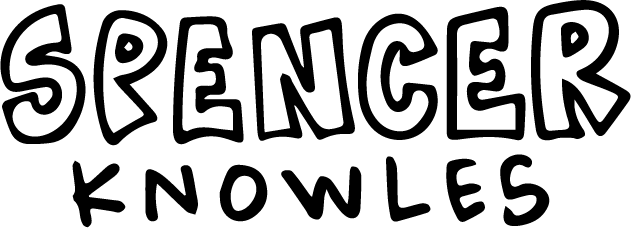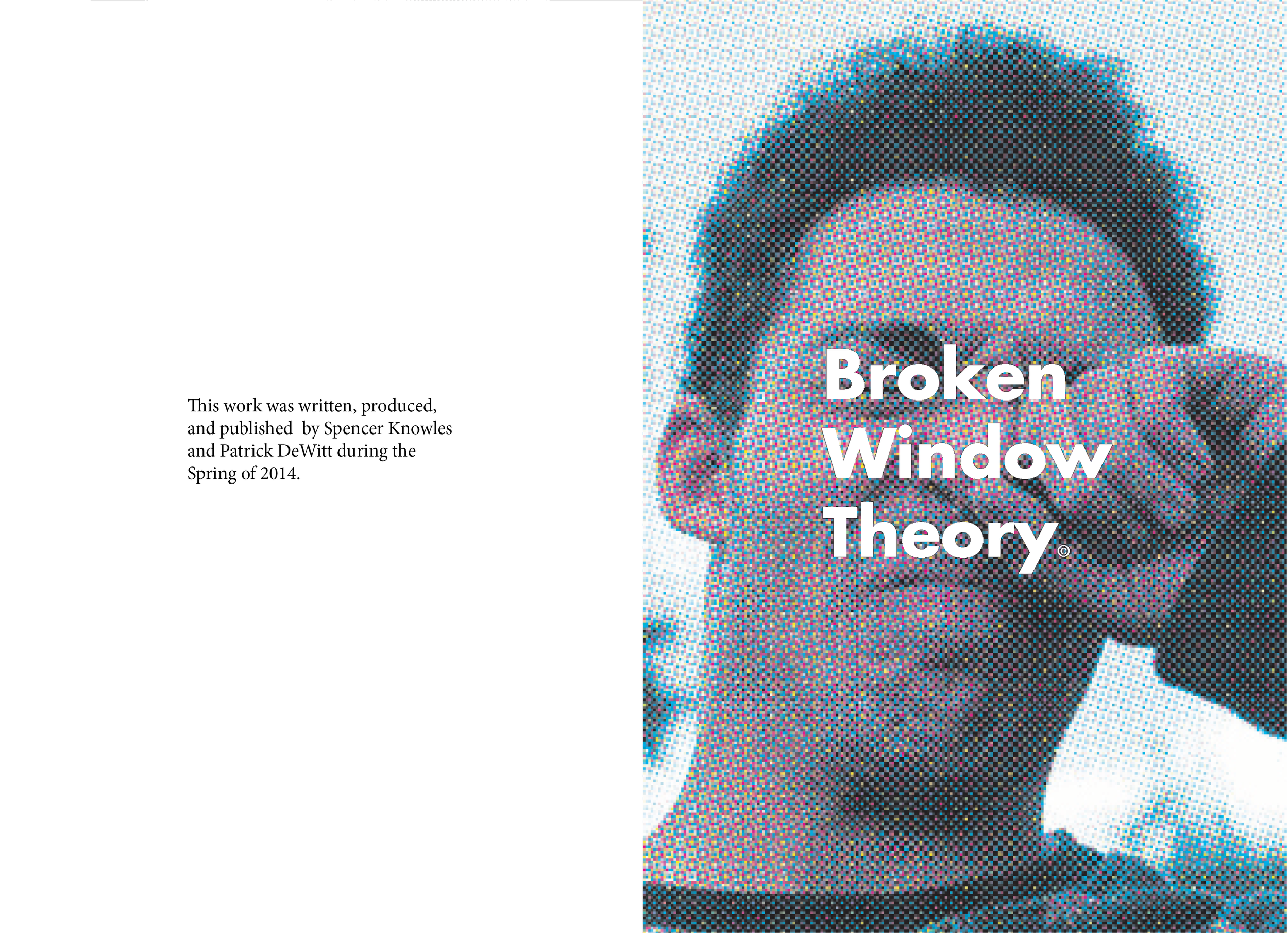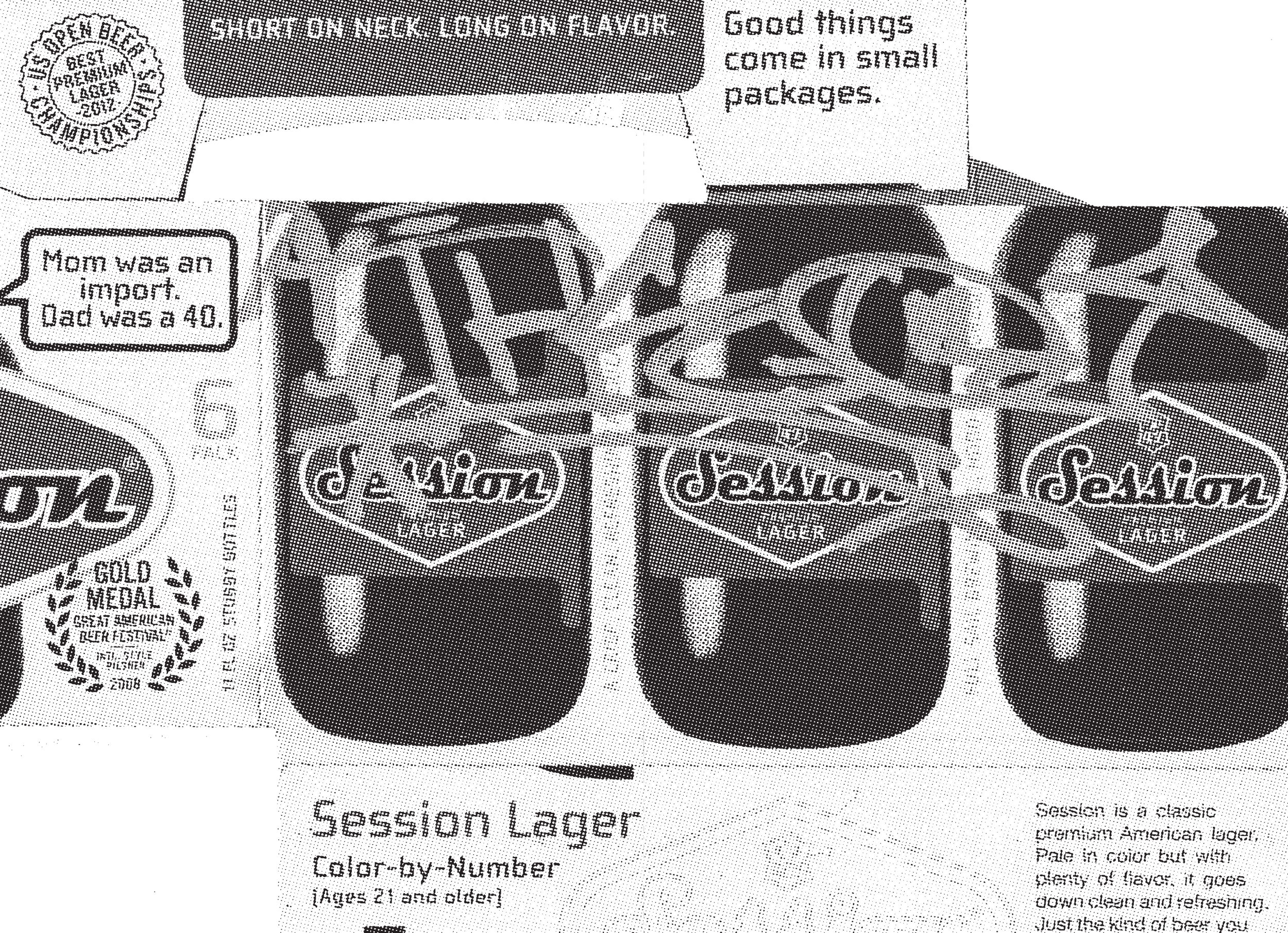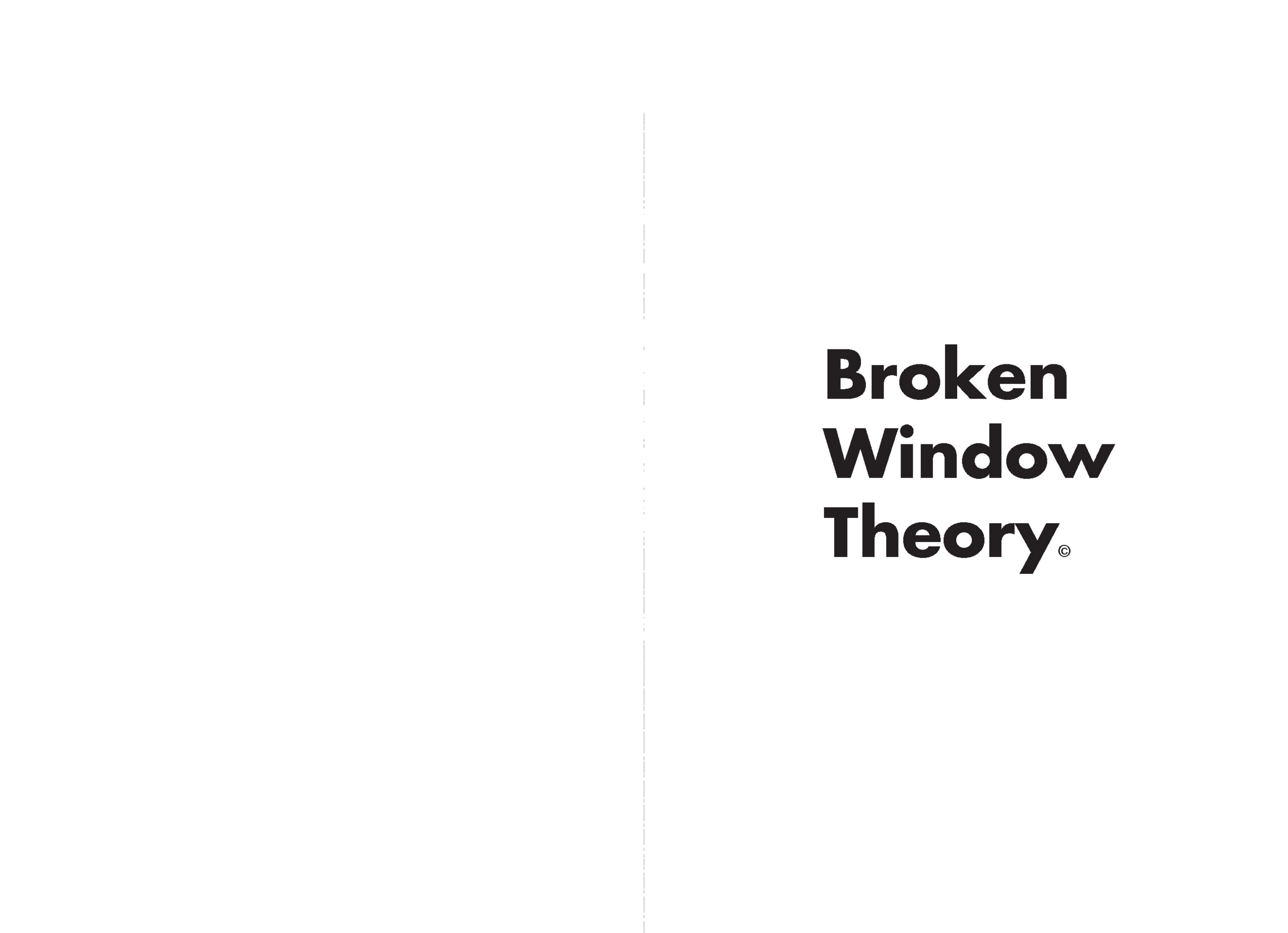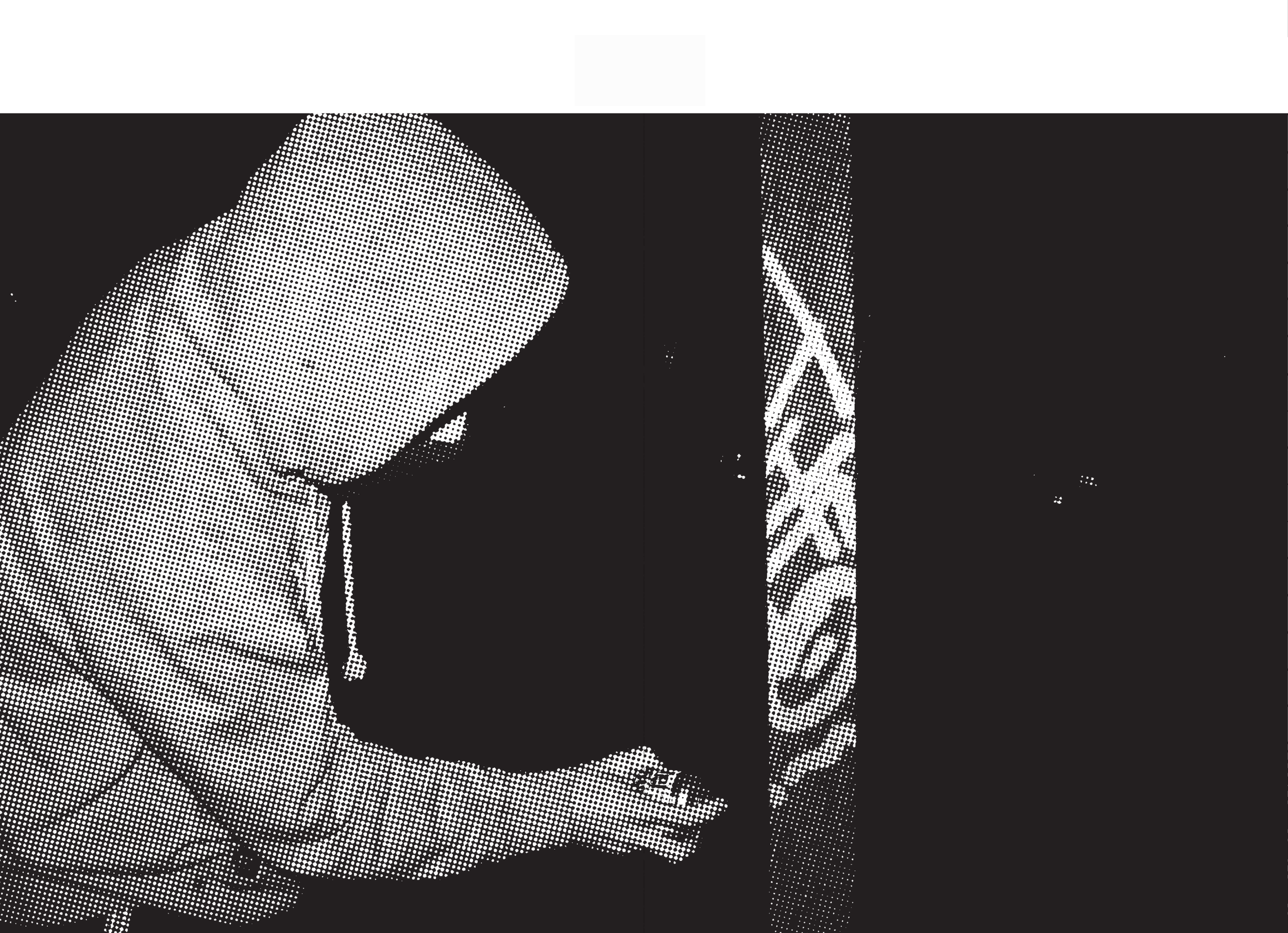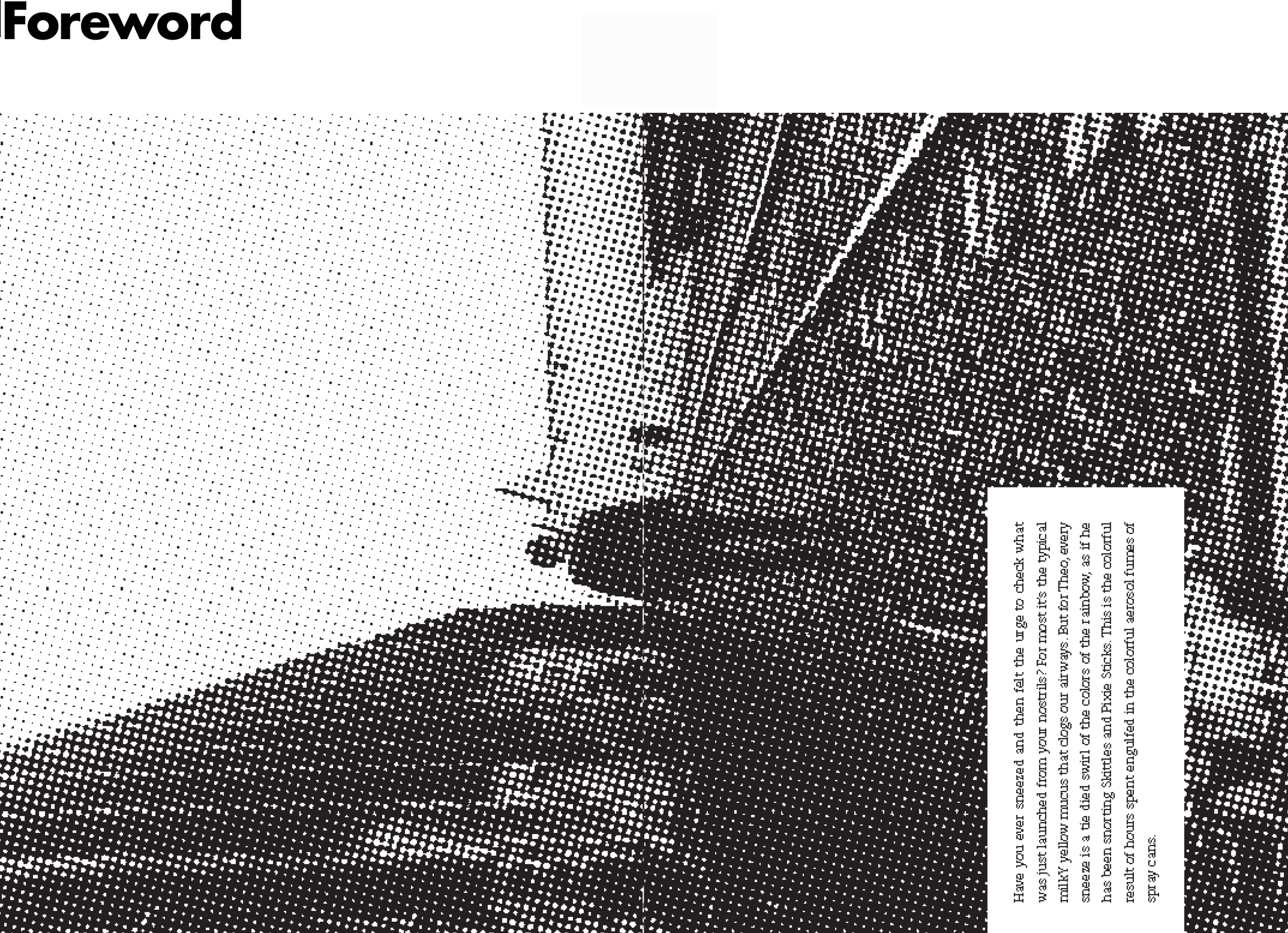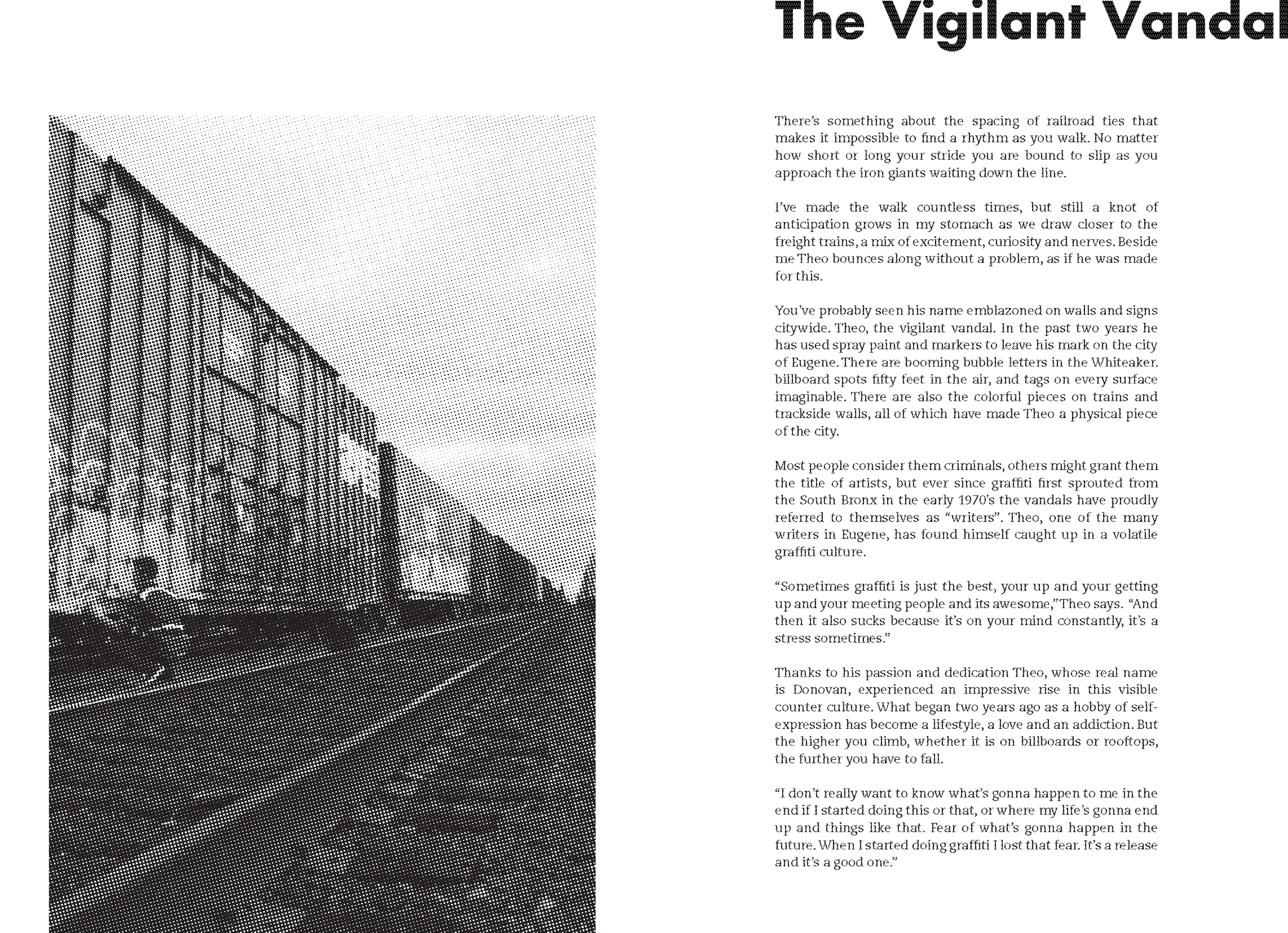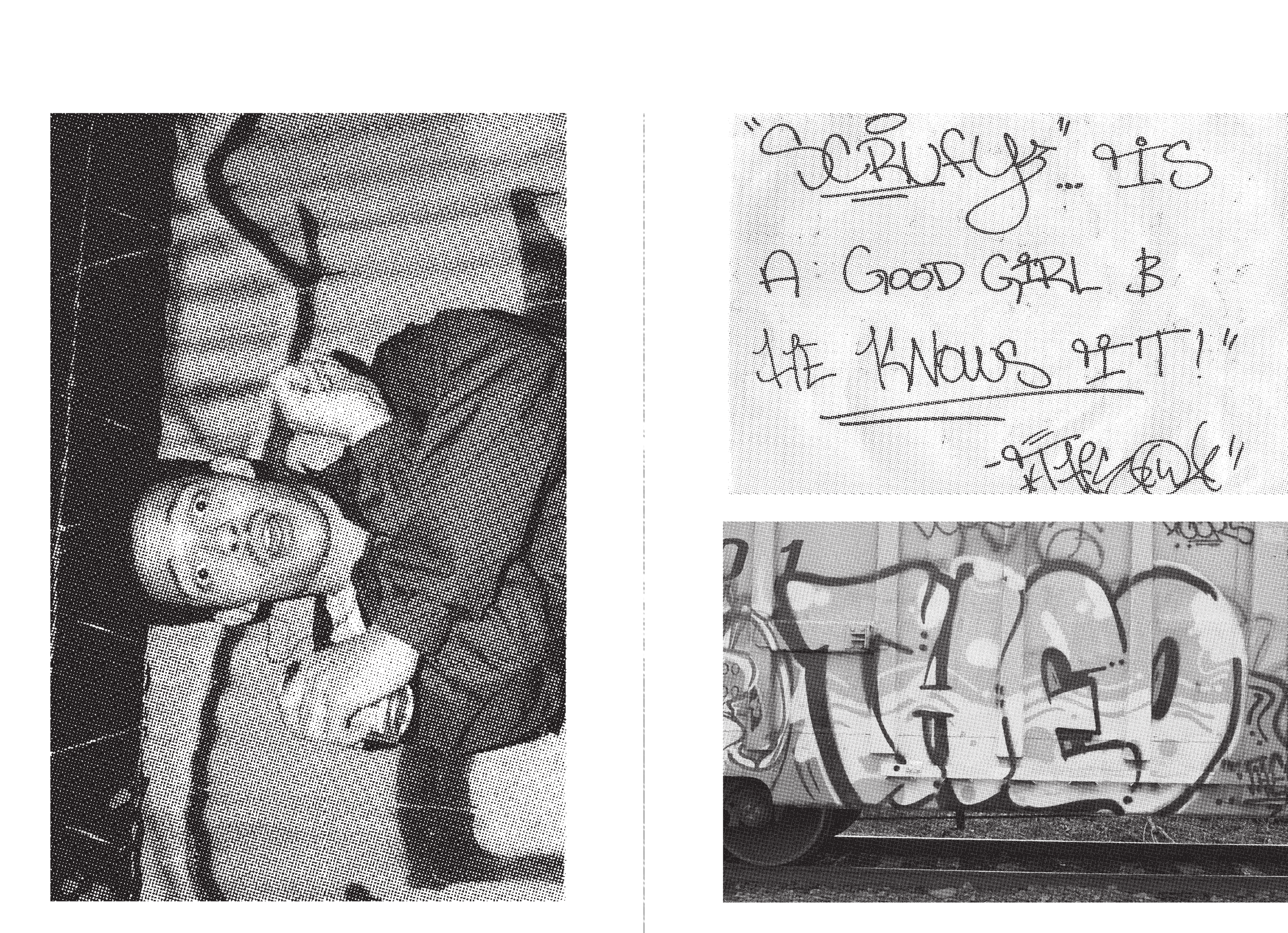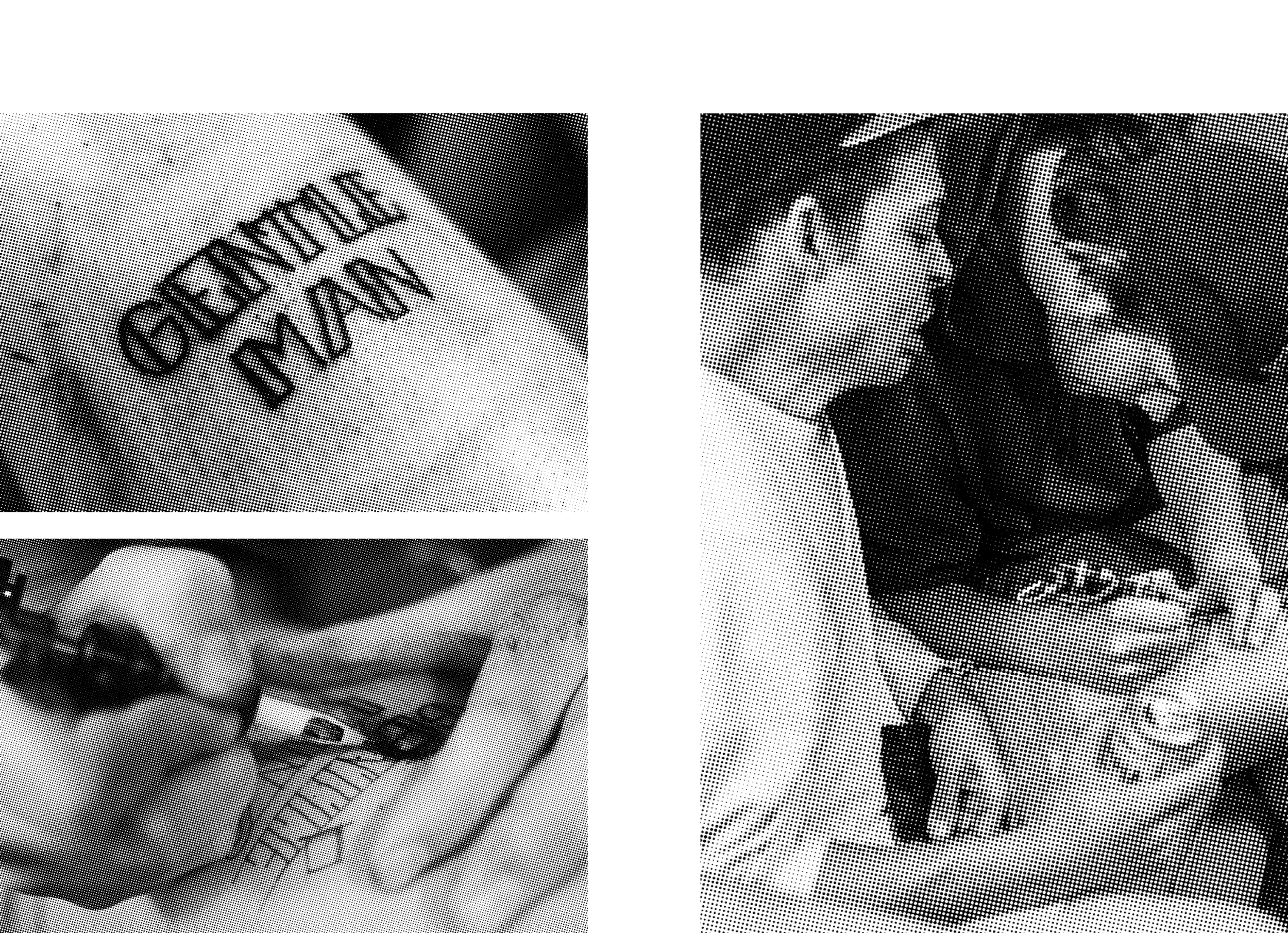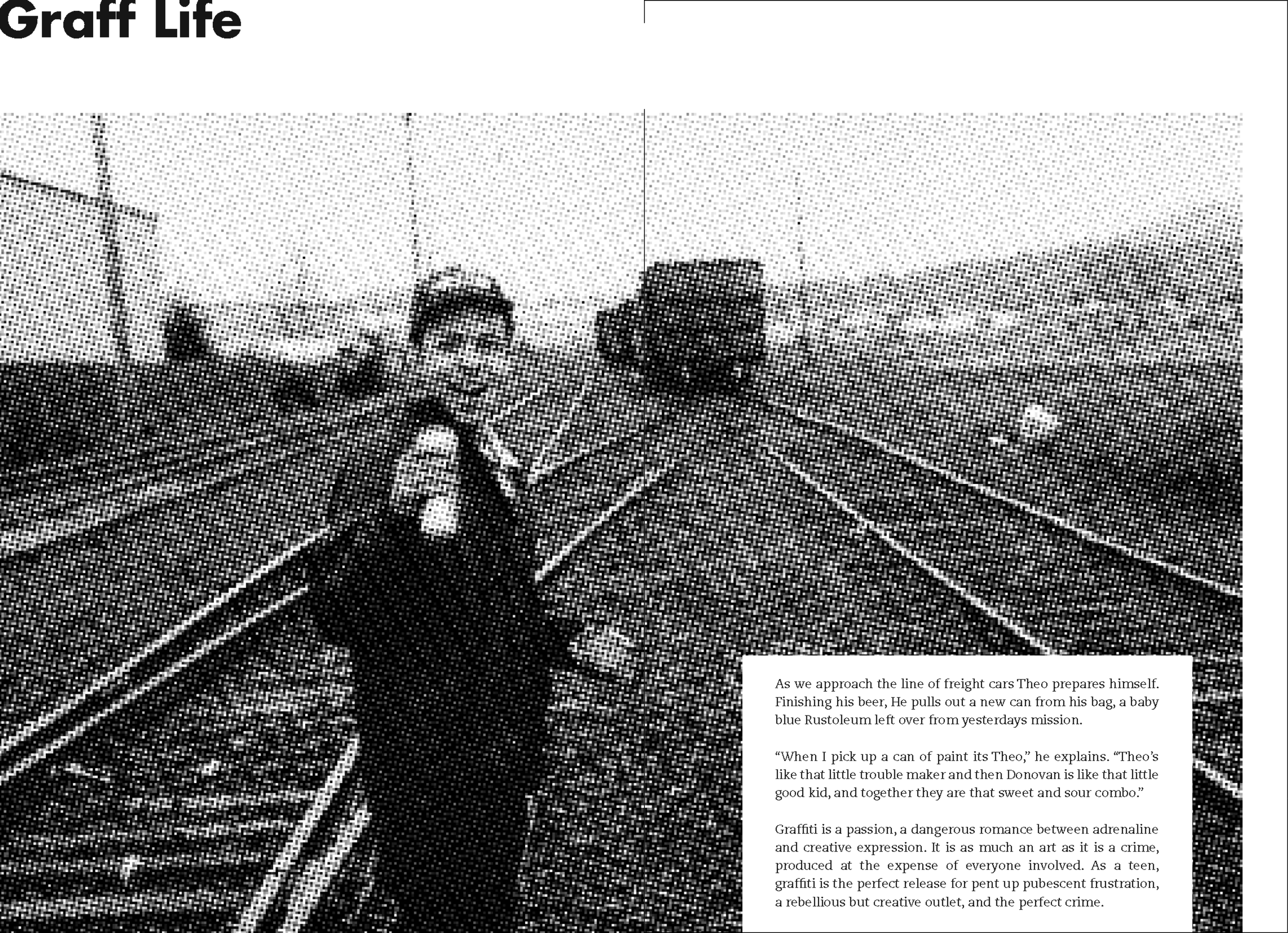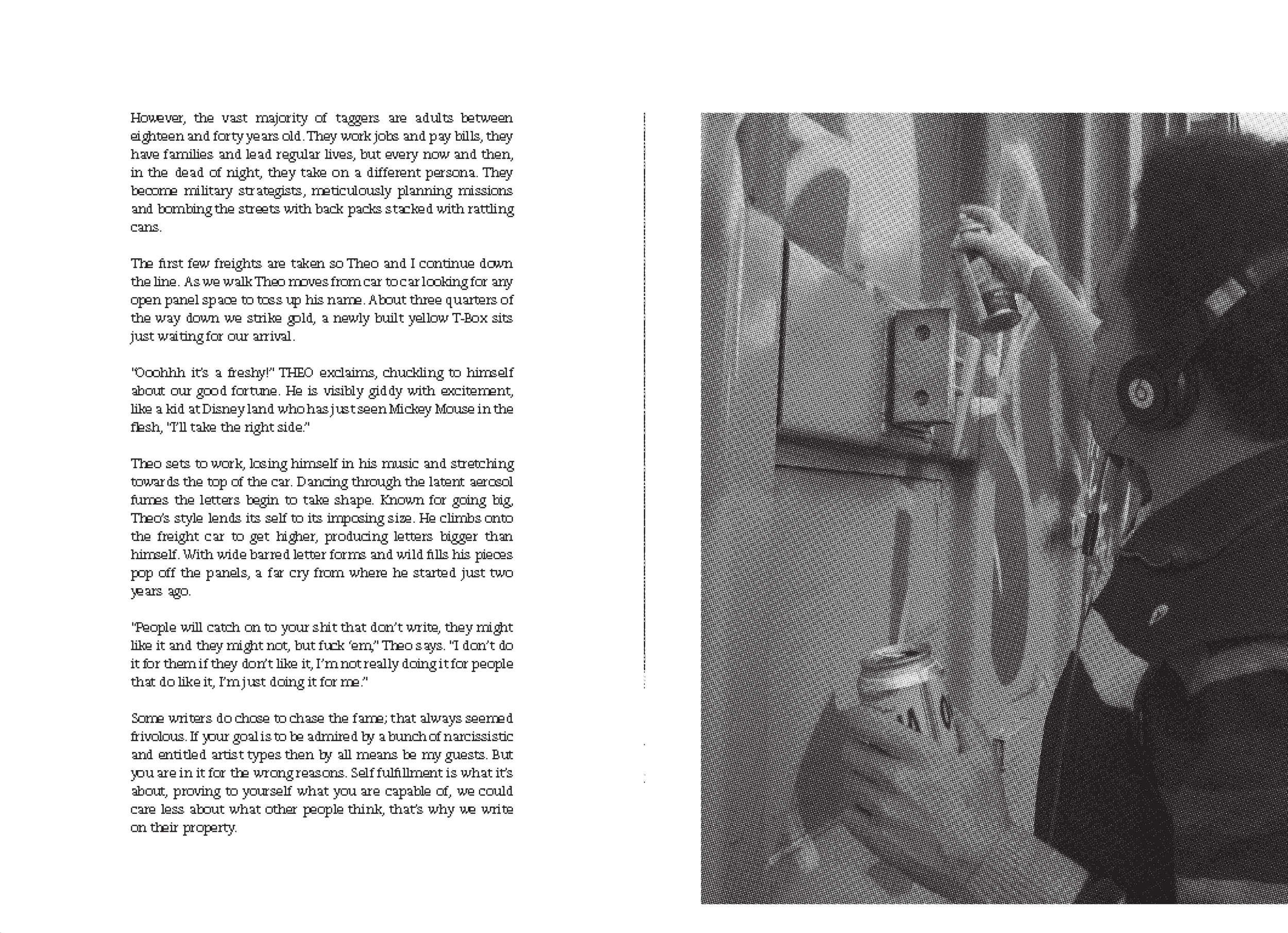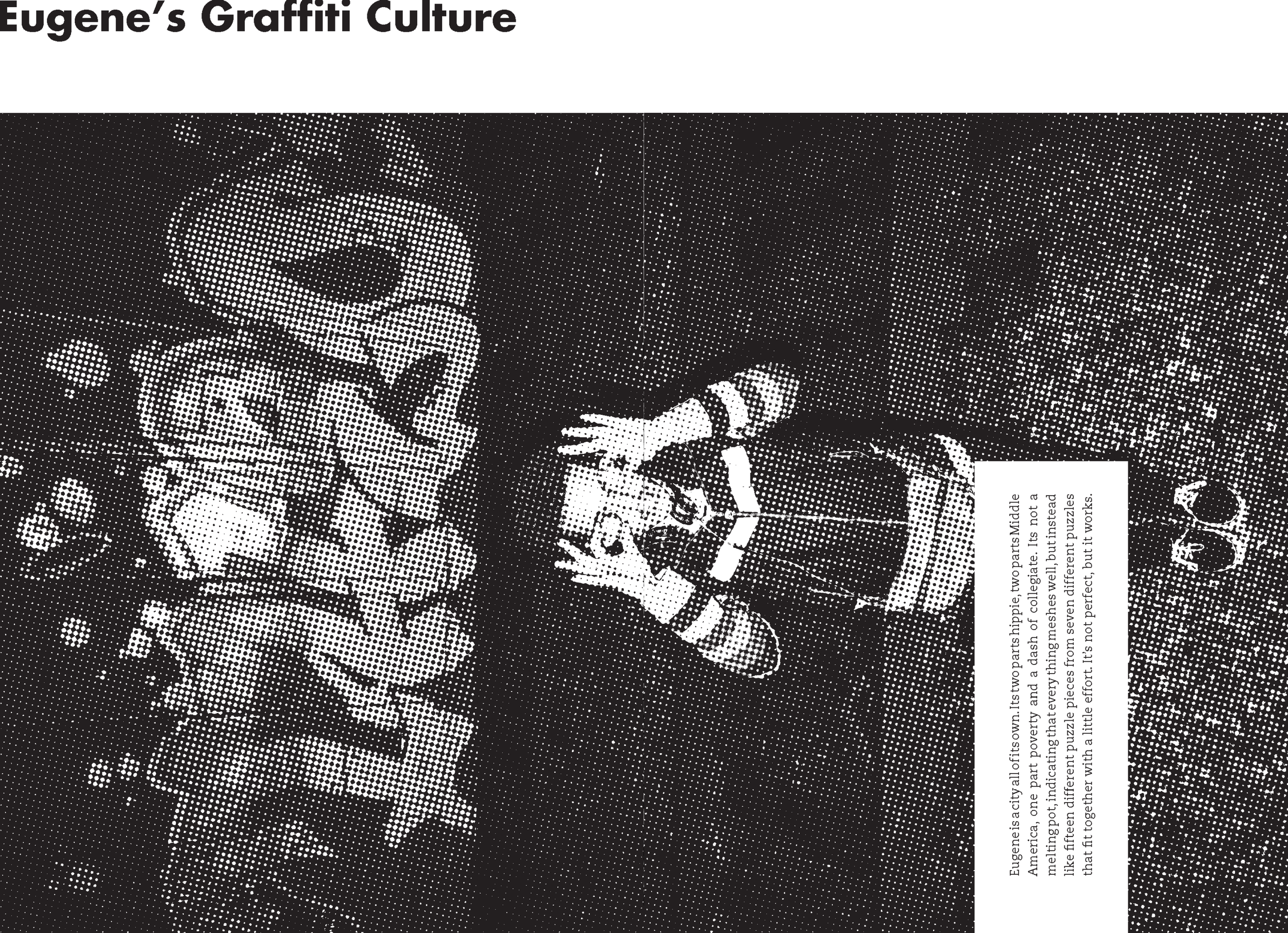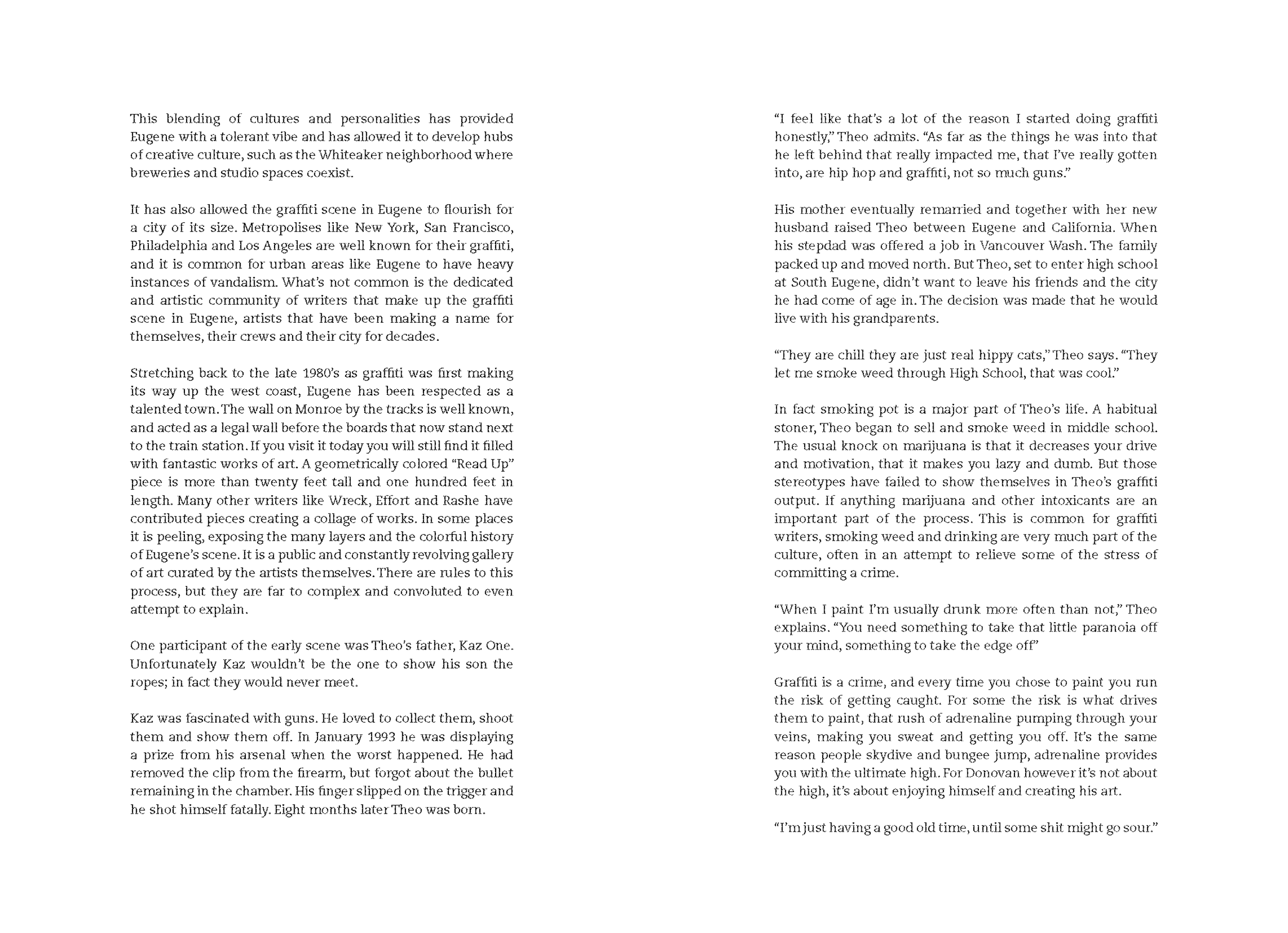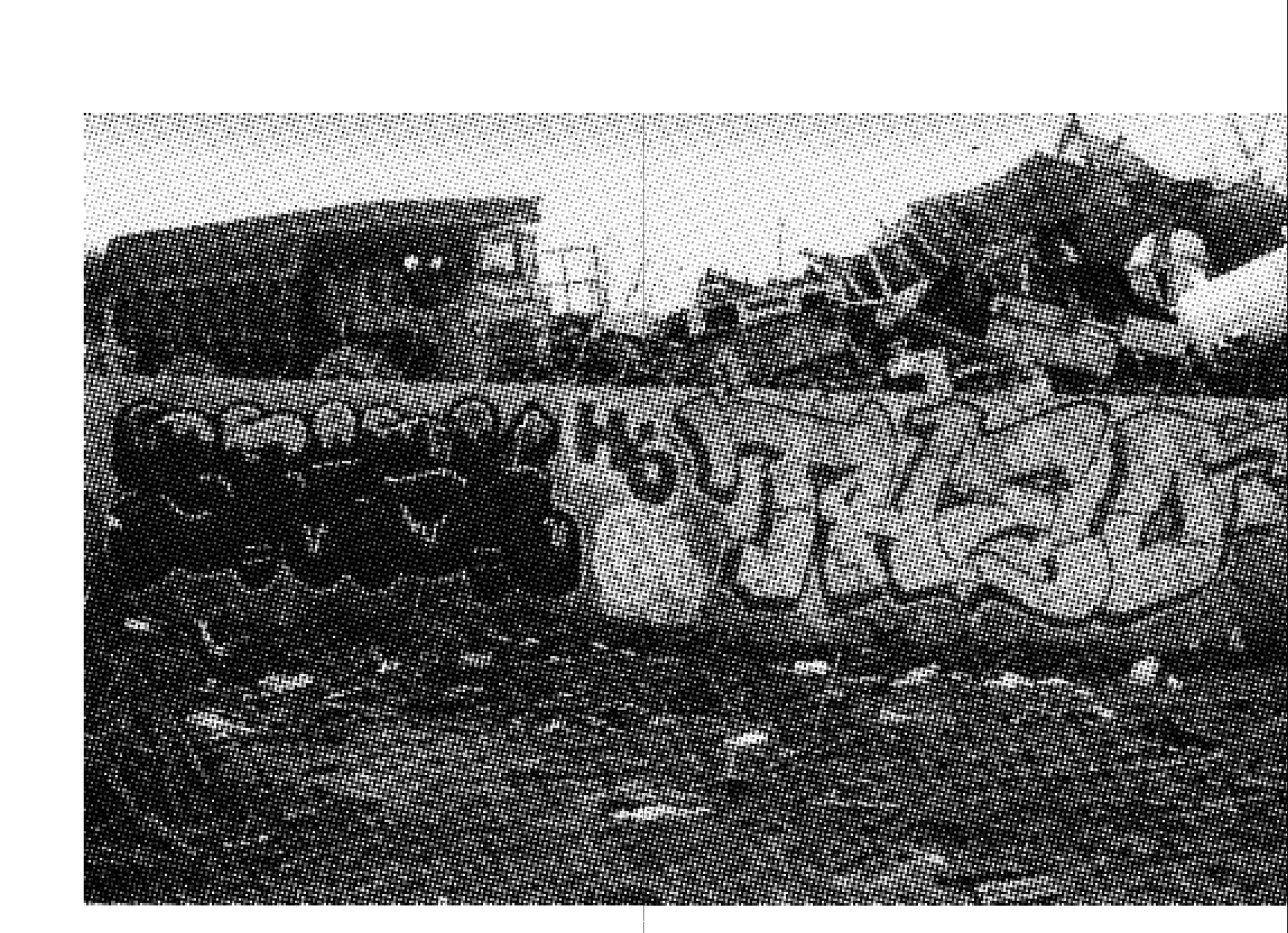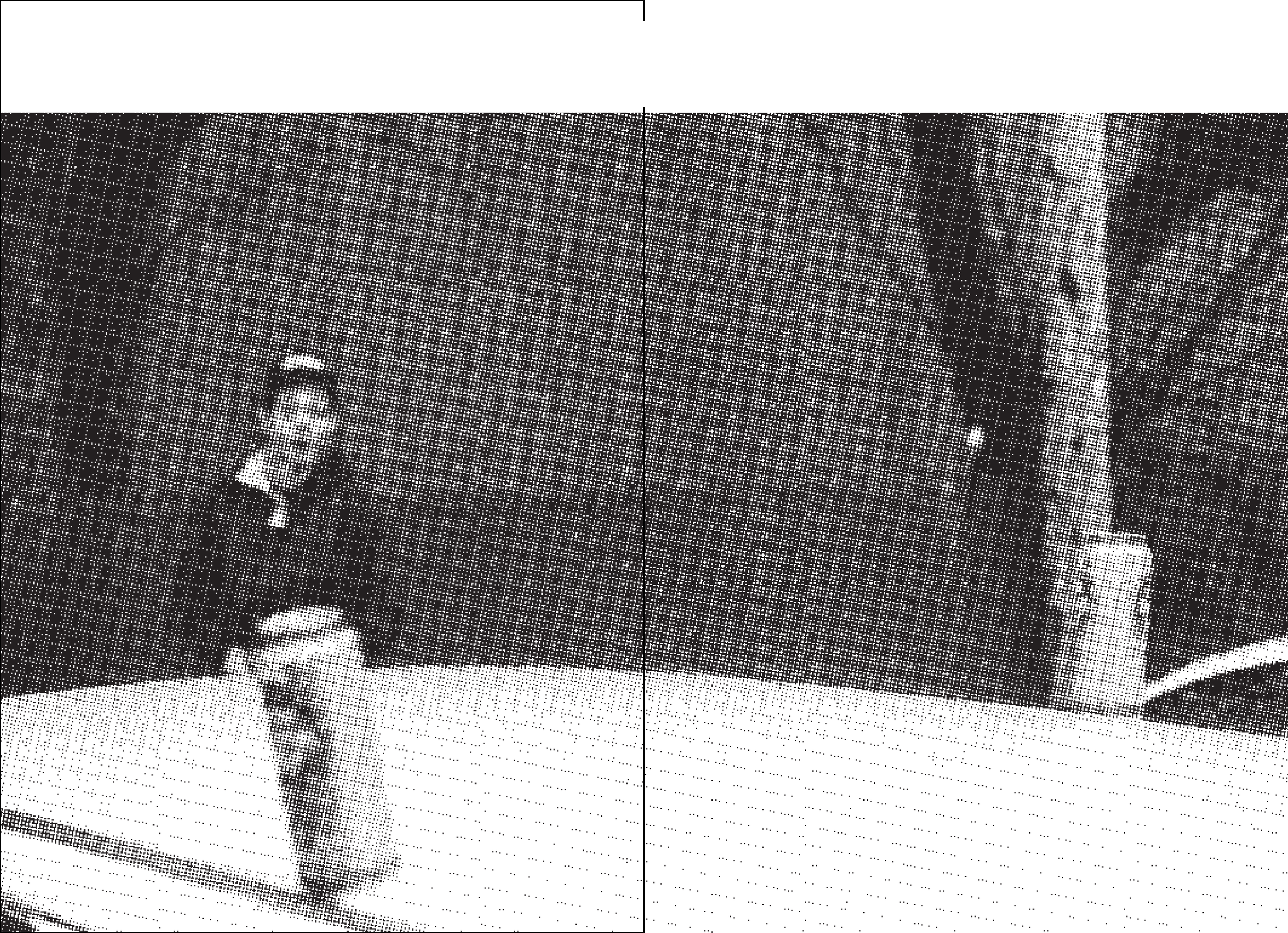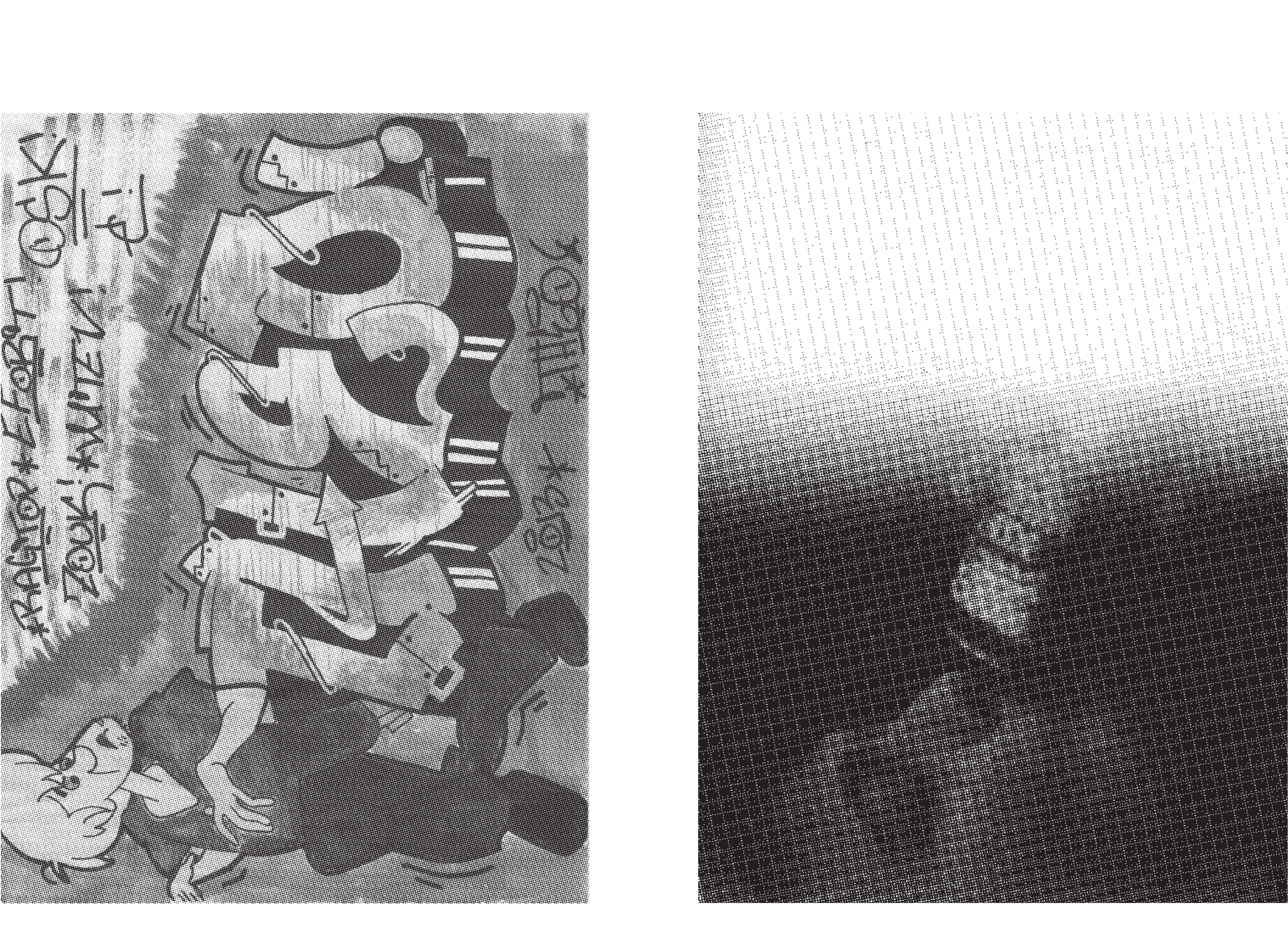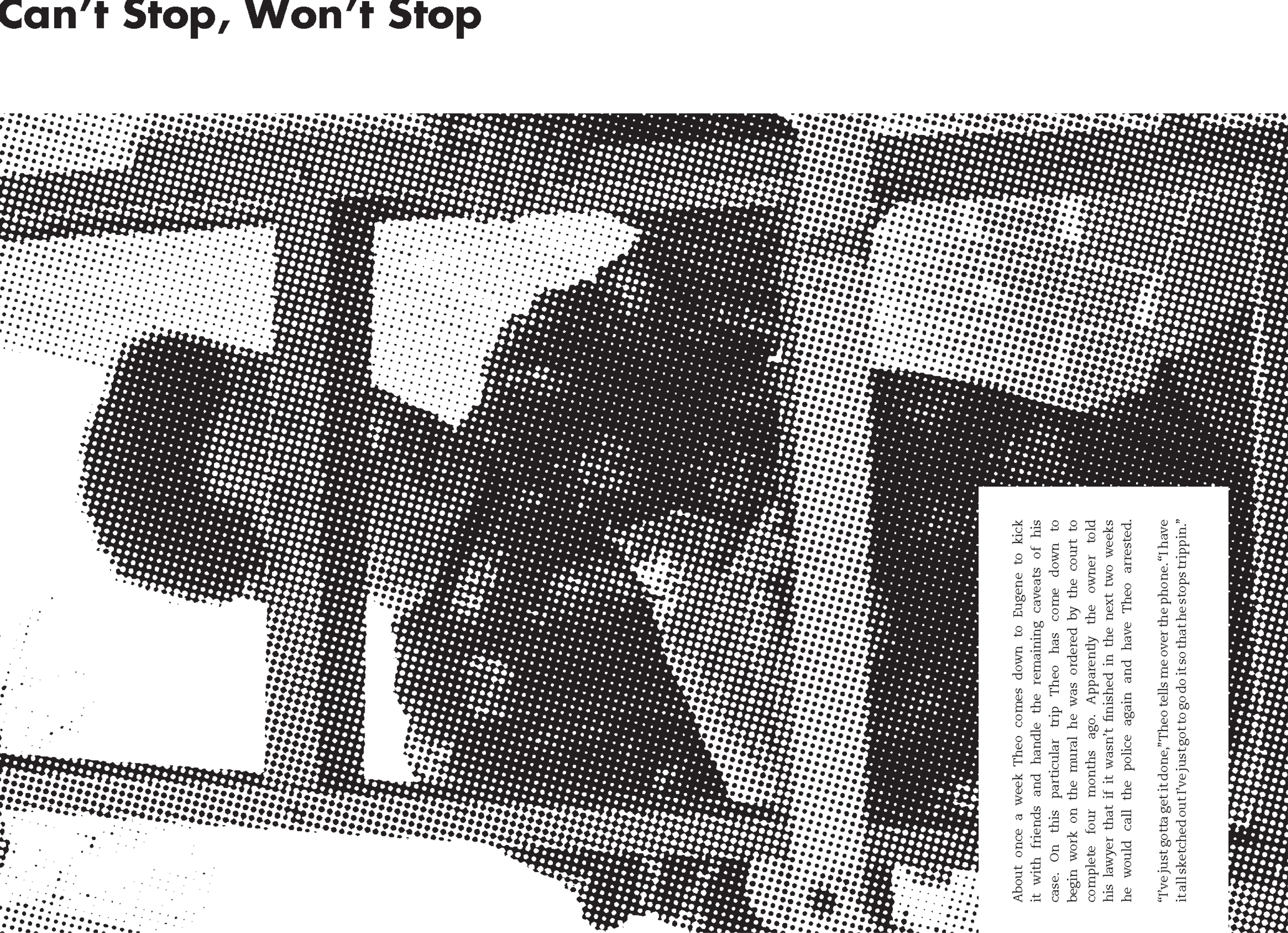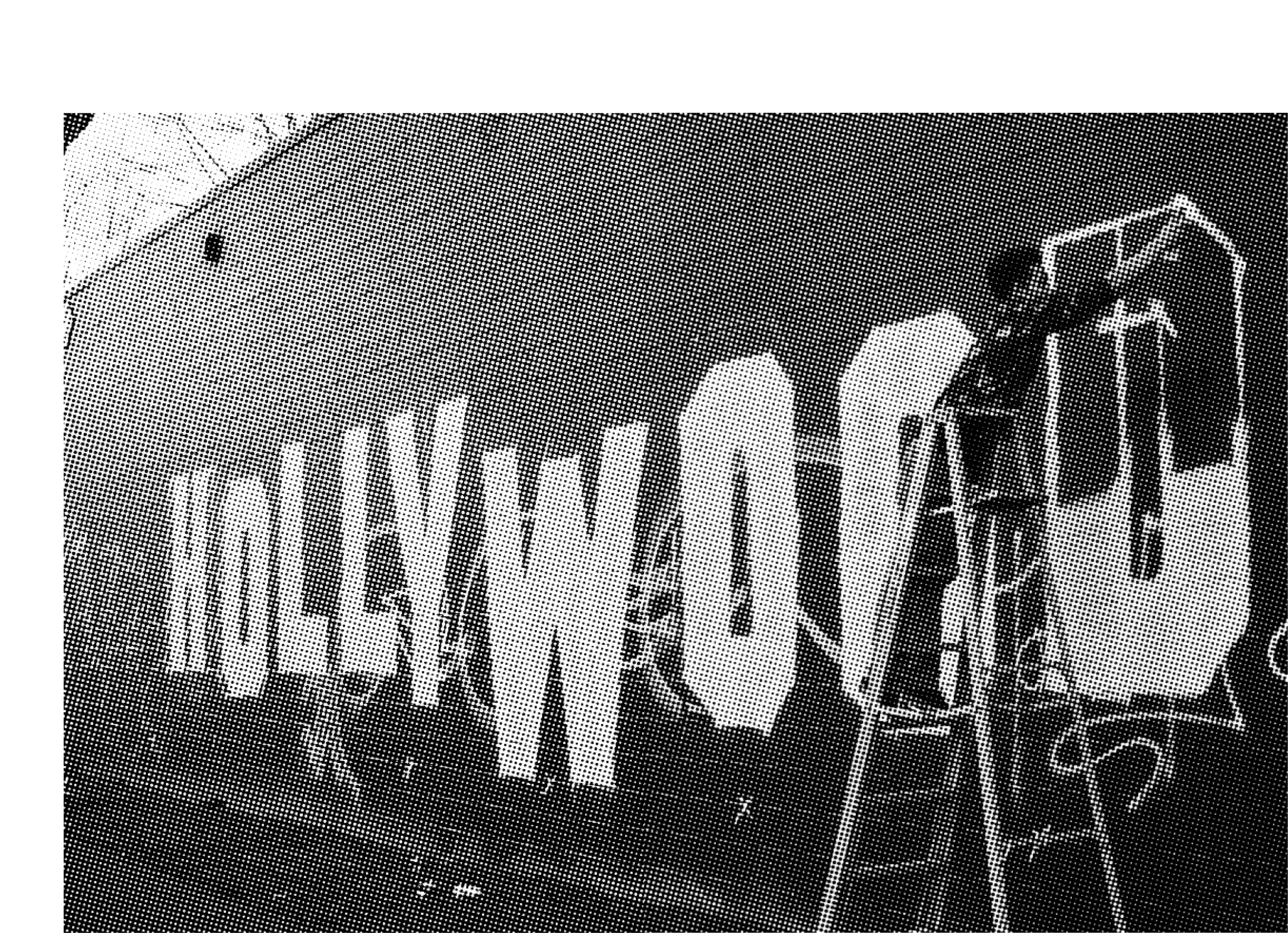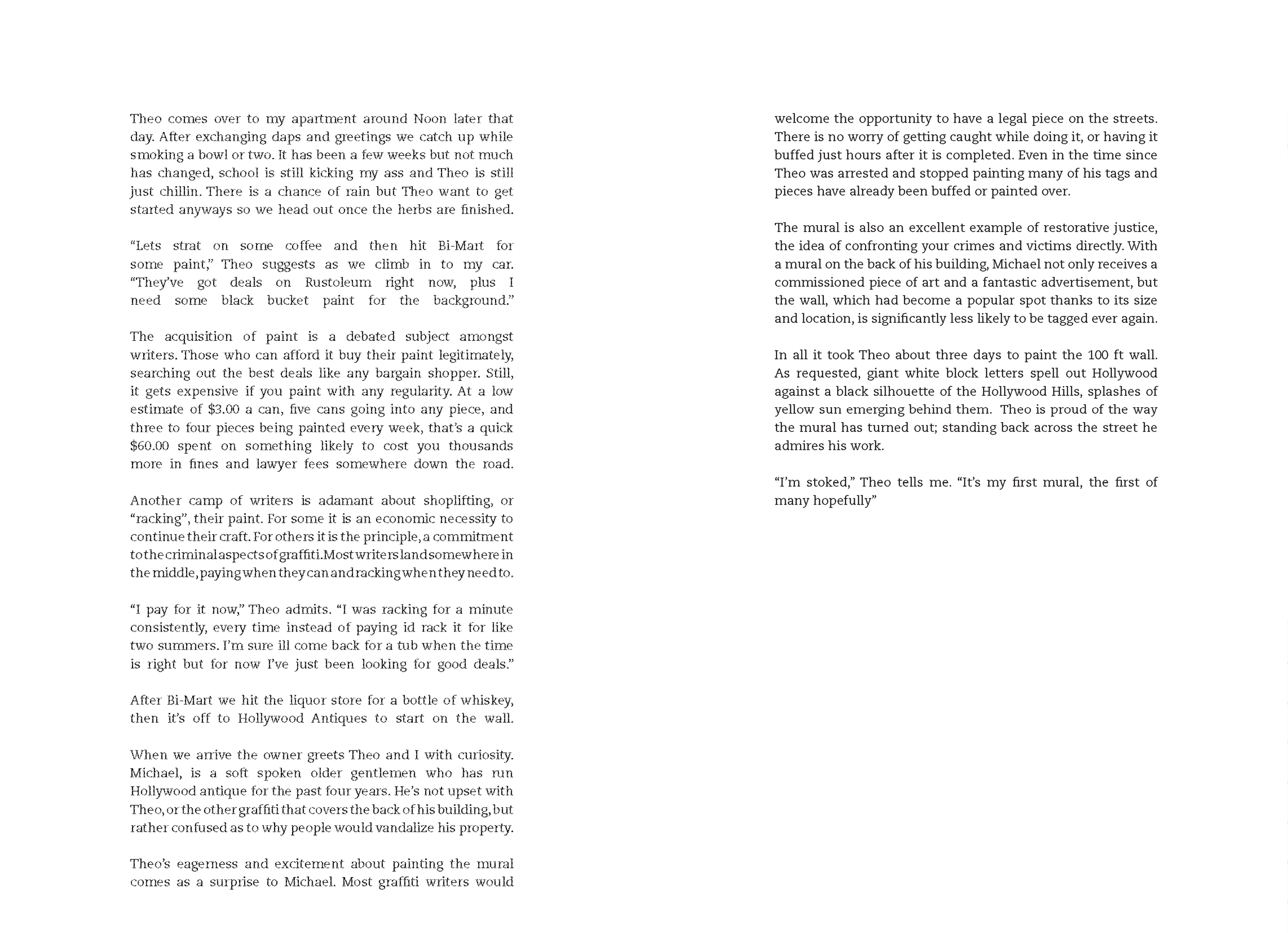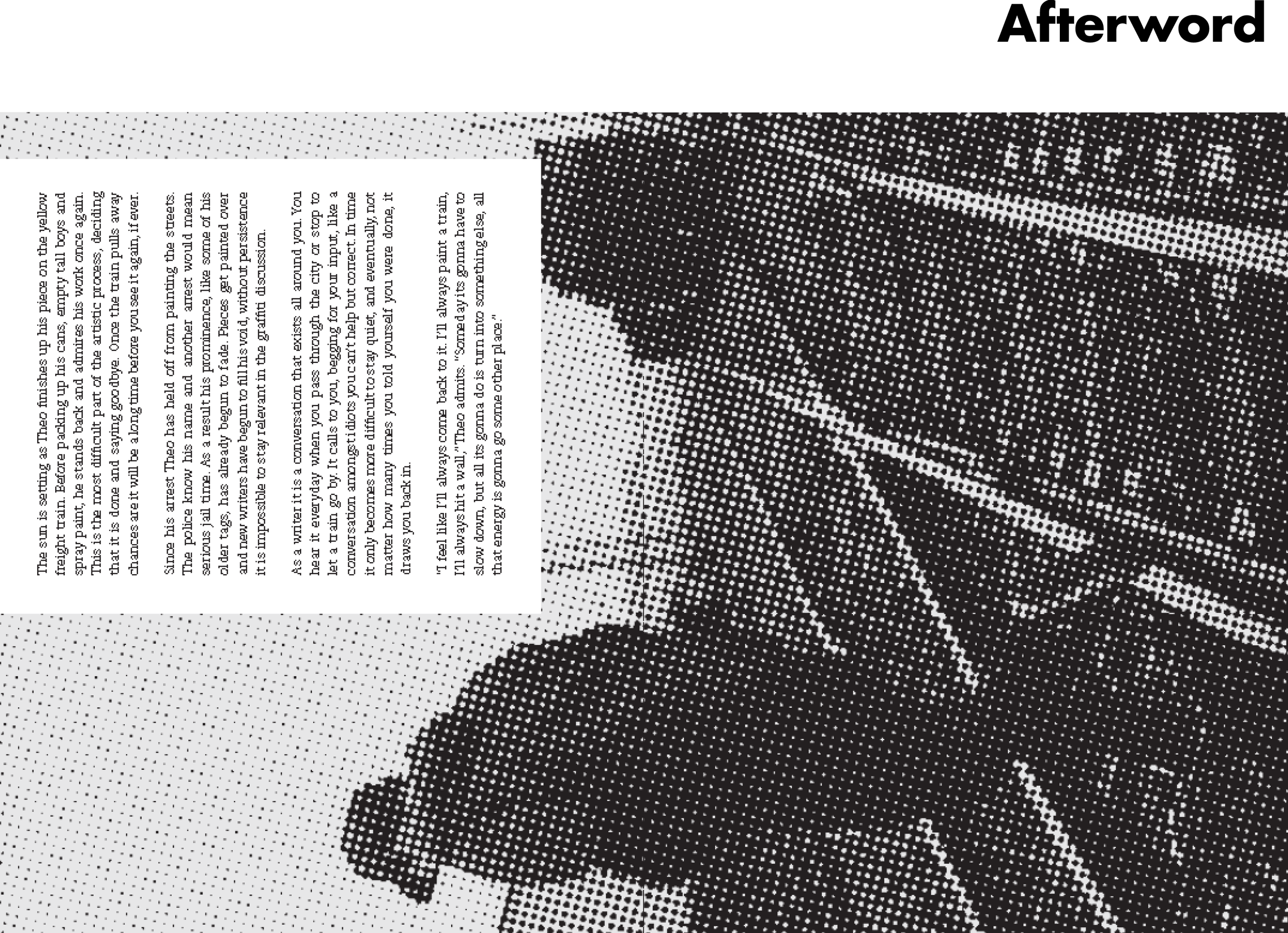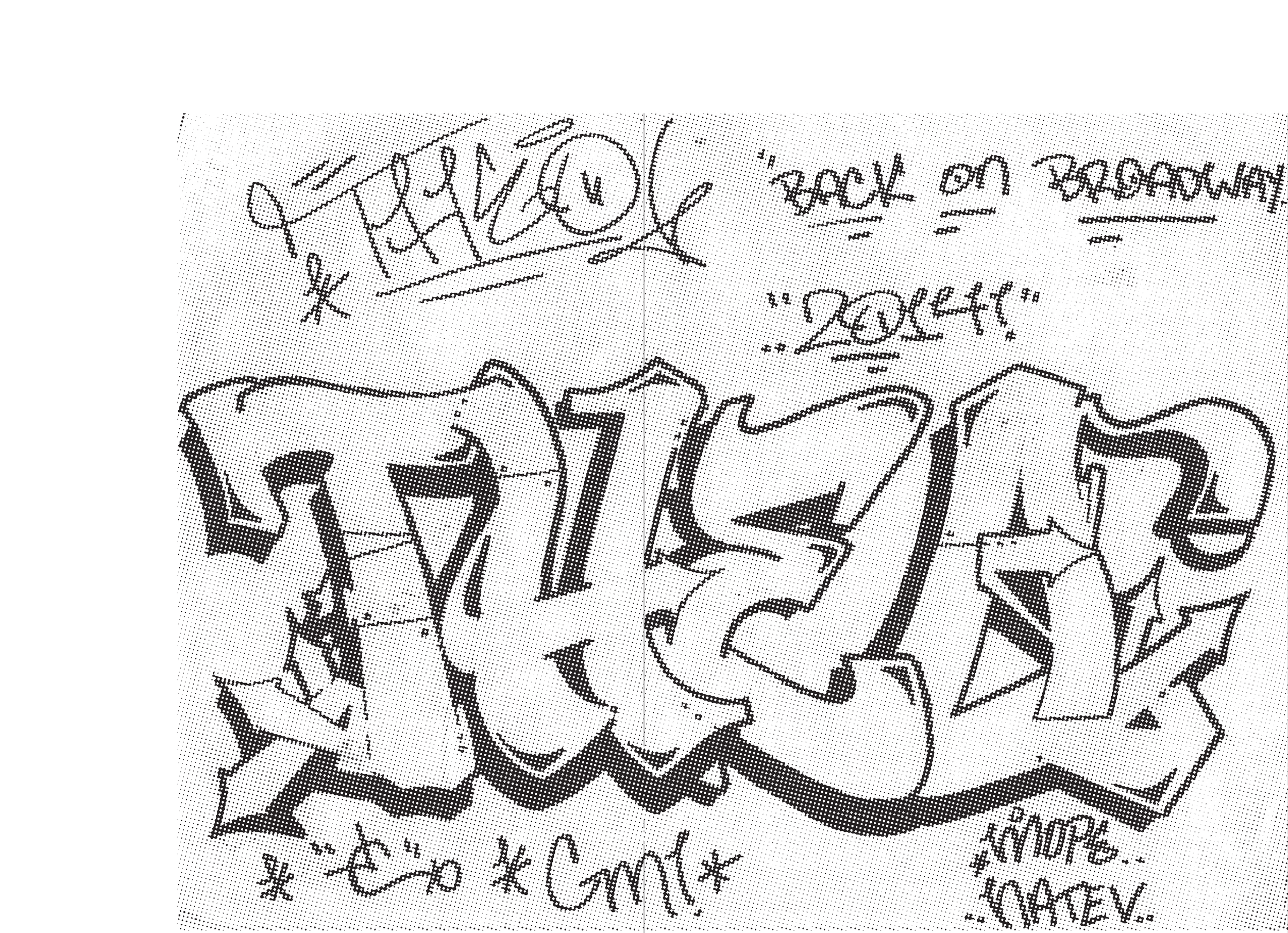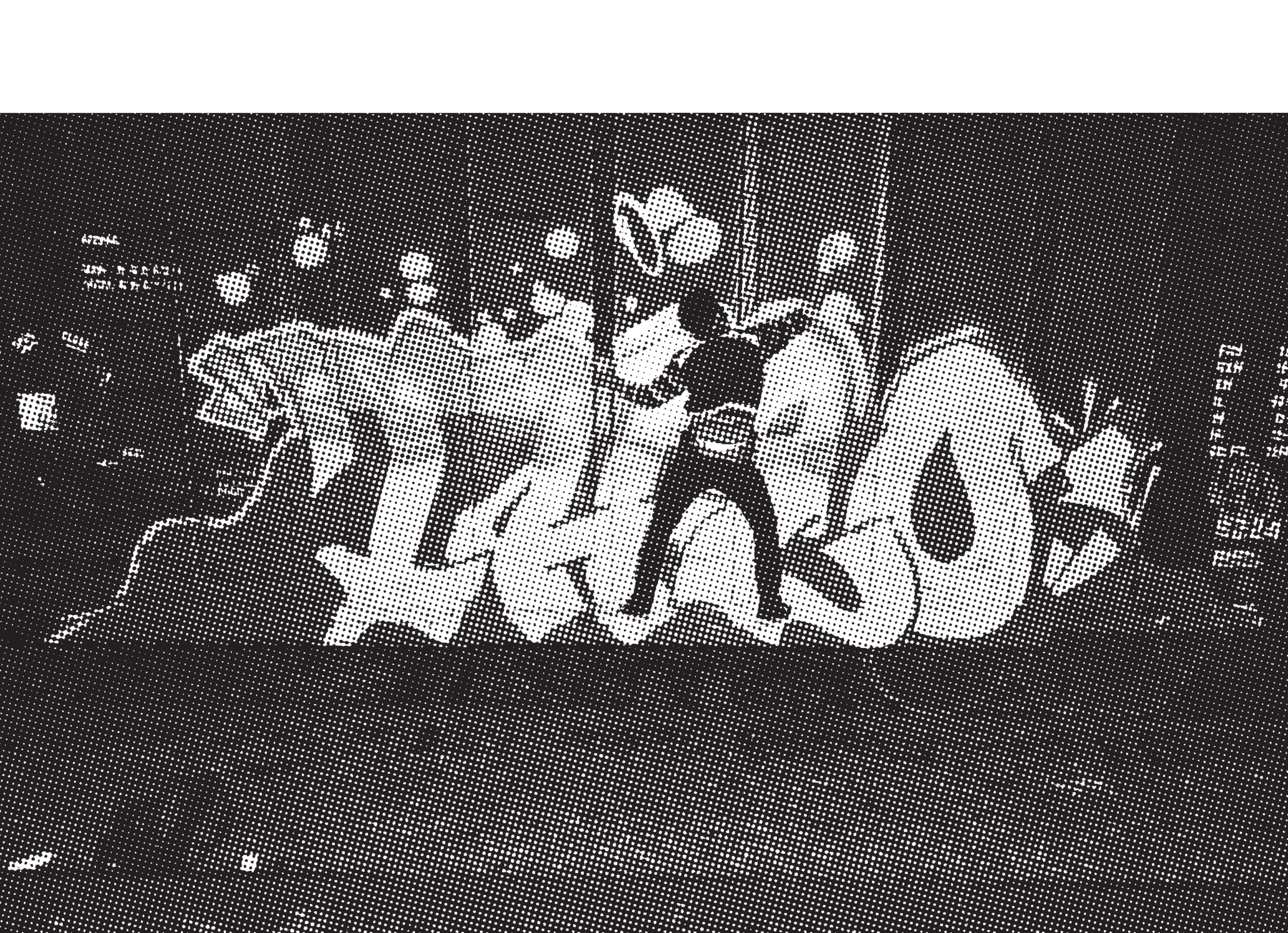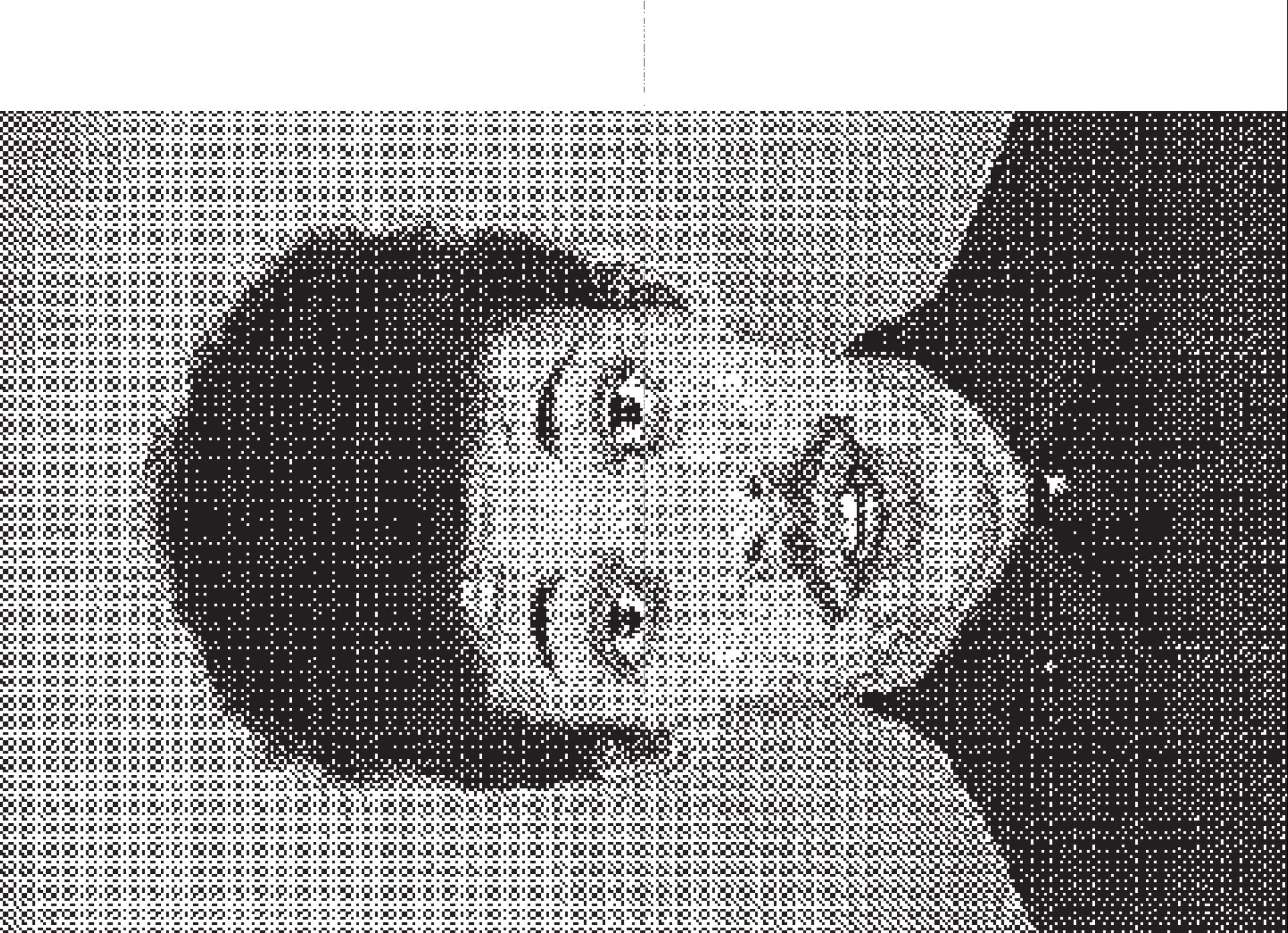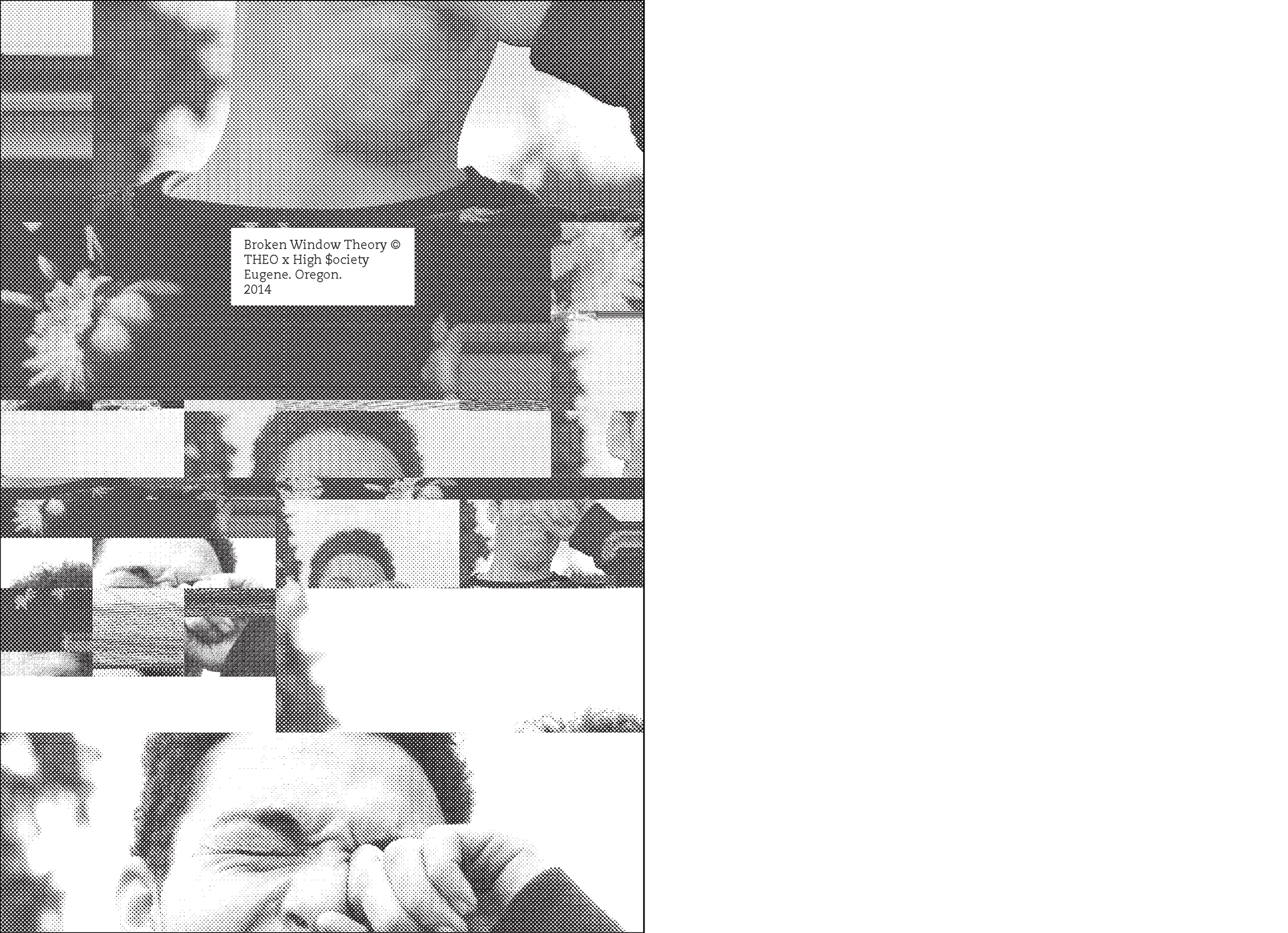Broken Window Theory
Writing and Creative Direction
Strictly speaking, the broken window theory is a criminological concept focused on the effect of vandalism and urban disorder on crime and anti-social behavior. But that’s not this.
The Broken Window Theory zine follows the rise and fall of THEO, a young graffiti writer from Eugene, Oregon, who found himself caught up in a volatile graffiti culture.
If you're interested in a print copy feel free to hit my line, we're always happy to share.
Digital PDF and text below.
Broken Window Theory
Foreword
Have you ever sneezed and felt the urge to check what was just launched from your nostrils? For most, it's the typical milky yellow mucus that clogs our airways. But for Theo, every sneeze is a tie-dyed swirl of the colors of the rainbow, as if he has been snorting Skittles and Pixie Sticks. This is the colorful result of hours spent engulfed in the colorful aerosol fumes of spray cans.
The Vigilant Vandal
There's something about the spacing of railroad ties that makes it impossible to find a rhythm as you walk. No matter how short or long your stride, you are bound to slip as you approach the iron giants waiting down the line.
I've made the walk countless times, but still, a knot of anticipation grows in my stomach as we draw closer to the freight trains, a mix of excitement, curiosity, and nerves. Beside me, Theo bounces along without a problem, as if he was made for this.
You've probably seen his name emblazoned on walls and signs citywide. Theo, the vigilant vandal. In the past two years, he has used spray paint and markers to leave his mark on the city of Eugene. There are booming bubble letters in the Whiteaker. billboard spots fifty feet in the air, and tags on every surface imaginable. There are also colorful pieces on trains and trackside walls, all of which have made Theo a physical piece of the city.
Most people consider them criminals, others might grant them the title of artists, but ever since graffiti first sprouted from the South Bronx in the early 1970s vandals have proudly referred to themselves as "writers". Theo, one of the many writers in Eugene, has found himself caught up in volatile graffiti culture.
"Sometimes graffiti is just the best, you’re up, and you’re getting up, and you’re meeting people, and it’s awesome," Theo says. "And then it also sucks because it's on your mind constantly. It's a stress sometimes."
Thanks to his passion and dedication, Theo, whose real name is Donovan, experienced an impressive rise in this visible counterculture. What began two years ago as a hobby of selfexpression has become a lifestyle, a love, and an addiction. But the higher you climb, whether it’s on billboards or rooftops, the further you have to fall.
"I don't really want to know what's gonna happen to me in the end, if I started doing this or that, or where my life's gonna end up and things like that. Fear of what's gonna happen in the future. When I started doing graffiti, I lost that fear. It's a release, and it's a good one."
Graff Life
As we approach the line of freight cars Theo prepares himself. Finishing his beer, he pulls a new can from his bag - a baby blue Rustoleum leftover from yesterday’s mission.
“When I pick up a can of paint it’s Theo,” he explains. “Theo’s that little trouble maker and then Donovan is like that little good kid. Together they are that sweet and sour combo.”
Graffiti is a passion, a dangerous romance between adrenaline and creative expression. It is as much an art as it is a crime, produced at the expense of everyone involved. As a teen, graffiti is the perfect release for pent up pubescent frustration, a rebellious but creative outlet, and the perfect crime.
However, the vast majority of taggers are adults between eighteen and forty years old. They work jobs, pay taxes, have families, and lead regular lives. But, every now and then, in the dead of night, they take on a different persona. They become military strategists, meticulously planning missions and bombing the streets with backpacks stacked with rattling cans.
The first few freights are taken, so Theo and I continue down the line. As we walk, Theo moves from car to car looking for any open panel space to toss up his name. About three-quarters of the way down, we strike gold. A newly built yellow T-Box sits just waiting for our arrival.
“Ooohhh it's a freshy!" Theo exclaims, chuckling to himself about our good fortune. He is visibly giddy with excitement, like a kid at Disneyland who has just seen Mickey Mouse in the flesh. “I'll take the right side," he announces.
Theo sets to work, losing himself in his music and stretching towards the top of the car. Dancing through the latent aerosol fumes, the letters begin to take shape. Known for going big, Theo’s style lends itself to the train’s imposing size. He climbs onto the freight car to get higher, producing letters bigger than himself. With wide barred letterforms and wild fills, his pieces pop off the panels - a far cry from where he started just two years ago.
“It’s funny how people will catch on to your shit that don't write. They might like it, and they might not, but fuck 'em," Theo says. “I don't do it for them if they don't like it. I'm not really doing it for people that do like it. I'm just doing it for me."
Some writers do choose to chase the “fame” - that always seemed frivolous. If your goal is to be admired by a bunch of narcissistic and entitled artist types then be my guest. But you’re in it for the wrong reasons. Self-fulfillment is what it's about, proving to yourself what you are capable of.
Eugene’s Graffiti Culture
Eugene is a city all of its own. Its two parts hippie, two parts Middle America, one part poverty and a dash of collegiate. Its not a melting pot, indicating that everything meshes well, but instead like fifteen different puzzle pieces from seven different puzzles that fit together with a little effort. It's not perfect, but it works.
This blending of cultures and personalities has provided Eugene with a tolerant vibe and allowed it to develop hubs of creative culture, such as the Whiteaker neighborhood where breweries and studio spaces coexist.
It has also allowed the graffiti scene in Eugene to flourish for a city of its size. Metropolises like New York, San Francisco, Philadelphia, and Los Angeles are well known for their graffiti, and it’s common for urban areas like Eugene to have heavy instances of vandalism. What's not common is the dedicated and artistic community of writers that make up the graffiti scene in Eugene. Writers here have been making a name for themselves, their crews, and their city for decades.
Stretching back to the late 1980s as graffiti was first making its way up the west coast, Eugene has been respected as a talented town. The wall on Monroe by the railroad tracks is well known and acted as a legal wall before the boards that now stand next to the train station. If you visit that wall today you will still find it filled with fantastic works of art.
A geometrically colored "Read Up" piece is over twenty feet tall and one hundred feet long. Many other writers like Wreck, Effort, and Rashe have contributed pieces that create a collage of works. In some places, it is peeling, exposing the many layers and the colorful history of Eugene's scene. It is a public and constantly revolving gallery of art curated by the artists themselves. There are rules to this process, but they are far too complex, convoluted, and pedantic to adequately explain.
One participant of the early scene was Theo's father, Kaz One. Unfortunately, Kaz wouldn't be the one to show his son the ropes; in fact, they would never meet.
Kaz was fascinated with guns. He loved to collect them, shoot them, and show them off. In January 1993, he was displaying a prize from his arsenal when the worst happened. He had removed the clip from the firearm but forgot about the bullet remaining in the chamber. Kaz’s finger slipped on the trigger and he shot himself - fatally. Eight Months later, Theo was born.
"I feel like that's a lot of the reason I started doing graffiti, honestly," Theo admits. "As far as the things he was into that he left behind that I've really gotten into, it’s hip hop and graffiti. Not so much guns”
His mother eventually remarried and, together with her new husband, raised Theo between Eugene and California. When his stepdad was offered a job in Vancouver, Washington, the family packed up and moved north. But Theo, about to enter high school at South Eugene, didn't want to leave his friends and the city he had come of age in. The decision was made that he would live with his grandparents.
"They are chill. They are just really hippy cats," Theo says. "They let me smoke weed through high school, that was cool."
In fact, smoking pot is a major part of Theo's life. A habitual stoner, Theo began to sell and smoke weed in middle school. The usual knock on marijuana is that it decreases your drive and motivation - that it makes you lazy. But those stereotypes have failed to show themselves in Theo's graffiti output. If anything, marijuana and other intoxicants are an important part of the process.
This is common for graffiti writers. Smoking weed and drinking are very much part of the culture, often in an attempt to relieve some of the stress of committing crimes.
"When I paint I'm usually drunk more often than not," Theo explains. "You need something to take that little paranoia off your mind. Something to take the edge off"
Graffiti is a crime, and every time you choose to paint you run the risk of getting caught. For some, the risk is what drives them to paint - that rush of adrenaline pumping through your veins, making you sweat and getting you off. It's the same reason people skydive and bungee jump, adrenaline provides you the ultimate high. For Donovan, however, it's not about the high. It's about enjoying himself and creating his art.
“I’m just having a good ole time, until some shit might go sour."
Consequences
Flat keg beer and shots of gin will do fucked up things to your insides. When a can of paint is in his hand Donovan becomes Theo, but when a bottle is in his grasp all bets are off.
At 11:36 pm it was still sweltering hot outside. The campus area is absent of life during the summer, so we were pretty carefree with our drinking and tagging as we walked to Taylor's bar. Forties and spray cans, empty fifths and gooey mop tags - summer is the fucking best.
As a minor, Theo wasn't going to be able to get into the bar. He decided to go hit a spot, which one I would never find out. We made plans to meet up later, but first, he begged me to buy him some beer.
Now this was a difficult decision. He was drunk for sure, like very drunk, like slurring at the top of his lungs, proclaiming himself a king drunk. But who was I to tell anybody not to indulge, I was wasted, and if there's one thing I hate it's a hypocrite. I left Theo with a forty and my homie Will and headed off to Taylor's in pursuit of a particular young lady.
"You ain't really about that graff life bro;' I heard as I walked away. "I'm Young Theo!"
Halfway through a game of pool Will came in and told me Theo was being arrested. I ran out of the bar so quickly I still had the cue ball in my hand.
Upon arriving in the 7-11 parking lot I saw Theo held to the ground by two large bouncers from down the street. In his drunken stooper, Theo had tagged a white truck with white paint directly in front of the owner who was now on the phone with the police.
"I'm cool man, I'm cool” Theo shouted. "I won’t do nothing."
As flashing lights began to fill the parking lot I yelled at Donovan trying to get his attention. No response. He was too drunk to comprehend what was going on. I never should have left his drunk ass alone, and I definitely didn't need to buy him that beer. I felt terrible. They dragged Theo off and I went back to the bar with a heavy heart.
Theo would wake up tomorrow alone and confused in the drunk tank. It would be the morning of his 20th birthday.
Later that night Will peed on my couch while he was sleeping. That's karma I guess.
In the morning I called the police station to check in on his situation. Donovan had been charged with 3 counts of criminal mischief for the events of the night. After an investigation into his other graffiti two counts more would be added for a total of five, two of which could carry felony implications. It seemed that his good fortune had finally run out and the graff life had finally caught up to him.
Through some sort of miracle, Donovan would make it out of this legal predicament relatively unscathed. Four of the five criminal mischief charges, including the two felonies, were dropped by the District Attorney. Donovan was sentenced to 10 days weekend jail time, seventy dollars in restitution, and ordered to construct a mural on one of the buildings he had tagged, Hollywood Antiques on 7th and Monroe.
Theo had painted the city red, causing tens of thousands of dollars in property damage, and got off with a slap on the wrist. Maybe it’s because Theo is young, or maybe the judge and DA suspected he is a good kid at heart, but they chose to treat his arrest as a learning experience.
"The situations you put yourself into sometimes suck, they're just really gnarly, but that just part of it," Donovan says. "It's how you deal with it, and in the end, it's all worth it in my opinion”
Can’t Stop Won’t Stop
About once a week Theo comes down to Eugene to kick it with friends and handle the remaining caveats of his case. On this particular trip, Theo has come down to begin work on the mural he was ordered by the court to complete four months ago. Apparently, the owner told Donovan’s lawyer that if it wasn't finished in the next two weeks he would call the police again and have Theo arrested.
"I've just gotta get it done," Theo tells me over the phone. "I have it all sketched out, I've just got to go do it so that he stops trippin."
Theo comes over to my apartment around Noon later that day. After exchanging daps and greetings we catch up while sharing a joint. It has been a few weeks but not much has changed, school is still kicking my ass and Theo is still just chillin. There’s a chance of rain, but Theo wants to get started anyways so we head out once the herbs are finished.
"Lets strat on some coffee and then hit Bi-Mart for some paint," Theo suggests as we climb into my car. "They've got deals on Rustoleum right now, plus I need some black bucket paint for the background."
The acquisition of paint is a debated subject amongst writers. Those who can afford it buy their paint legitimately, searching out the best deals like any bargain shopper. Still, it gets expensive if you paint with any regularity. At a low estimate of $3.00 a can, five cans going into any piece, and three to four pieces being painted every week, that's a quick $60.00 spent on something likely to cost you thousands more in fines and lawyer fees somewhere down the road.
Another camp of writers is adamant about shoplifting, or "racking", their paint. For some, it is an economic necessity to continue their craft. For others, it is the principle, a commitment to the criminal aspects of graffiti. Most writers land somewhere in the middle, paying when they can and racking when they need to.
"I pay for it now," Theo admits. "I was racking for a minute consistently. Every time. Instead of paying, I’d rack it, for like two summers. I'm sure ill come back for a tub when the time is right but for now, I've just been looking for good deals."
After Bi-Mart we hit the liquor store for a bottle of whiskey, then it's off to Hollywood Antiques to start on the wall.
When we arrive the owner greets Theo and I with curiosity. Michael is a soft-spoken older gentleman who has owned Hollywood Antique for the past four years. He's not upset with Theo, or the other graffiti that covers the back of his building, but rather confused as to why people would vandalize his property.
Theo's eagerness and excitement about painting the mural comes as a surprise to Michael.
Most graffiti writers would welcome the opportunity to have a legal piece on the streets. There is no worry of getting caught while doing it or having it buffed just hours after it is completed. Even in the short time since Theo was arrested and stopped painting many of his tags and pieces have already been buffed or painted over.
The mural is also an excellent example of restorative justice, the idea of confronting your crimes and victims directly. With a mural on the back of his building, Michael not only receives a commissioned piece of art and a fantastic advertisement, but the wall, which had become a popular spot thanks to its size and location, is significantly less likely to be tagged ever again.
In all, it took Theo about three days to paint the 100 ft wall. As requested, giant white block letters spell out Hollywood against a black silhouette of the Hollywood Hills, splashes of yellow sun emerging behind them. Theo is proud of the way the mural has turned out; standing back across the street he admires his work.
'I’m stoked," Theo tells me. "It's my first mural, the first of many hopefully"
The sun is setting as Theo finishes up his piece on the yellow freight train. Before packing up his cans, empty tallboys and spray paint, he stands back and admires his work once again. This is the most difficult part of the artistic process - deciding that it is done and saying goodbye. Once the train pulls off, chances are it will be a long time before you see it again, if you ever do.
Since his arrest, Theo has held off from painting the streets. The police know his name and another arrest would mean serious jail time. As a result, his prominence, like some of his older tags, has already begun to fade. Pieces get painted over and new writers have begun to fill his void. Without persistence, it is impossible to stay relevant in the graffiti discussion.
As a writer, it is a conversation that exists all around you. You hear it every day when you pass through the city or stop to let a train go by. It calls to you, begging for your input, like a conversation amongst idiots you can't help but correct. With time, it only becomes more difficult to stay quiet. Eventually, no matter how many times you told yourself you were done, it draws you back in.
“I feel like I'll always come back to it. I'll always paint a train, I'll always hit a wall," Theo admits. "Someday its gonna have to slow down, but all its gonna do is turn into something else. All that energy has to end up somewhere."
